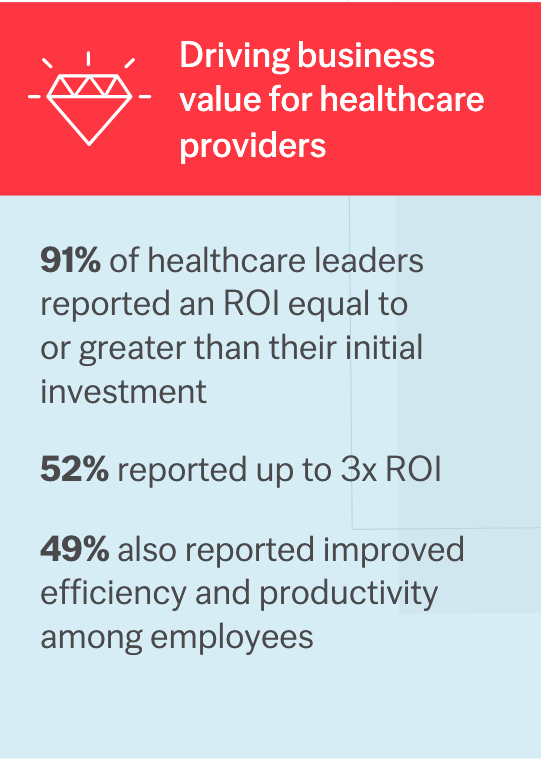.png)
Healthcare has always been about people, whether it's providing exceptional patient care or ensuring a supportive environment for medical staff. Yet, as demands increase, there’s a growing need for healthcare professionals — particularly private practice and clinic owners — to consider how automation can alleviate everyday pressures. By automating patient management and administrative tasks, healthcare leaders can create smoother workflows, reduce operational costs, and ultimately allow their teams to focus more on patients.
With this we want to explore how automation can reshape daily tasks in private practices and clinics, making life a bit easier for everyone involved.
Based on the research that we conducted - 64% of healthcare decision makers tell us that 50% to 100% of their hospitals' processes are managed on paper/email/excel.
84% believe that their hospital has been impacted by incorrect or missing data, due to manual processes in the last 12 months.
38% believe that a lack of resources and technical skillsets has prevented them from automating.
69% of healthcare decision makers surveyed say their hospital is motivated to automate workflows, to improve patient care.
In simple terms, healthcare automation uses technology to simplify repetitive tasks, from administrative to patient management. Think of it as an assistant that takes care of booking, reminders, billing, and even medication management. By letting automation handle these “busywork” tasks, medical teams can invest their energy where it matters most: patient care.
Patient management is more than just keeping records; it’s about creating a seamless experience from the moment they book an appointment to follow-up care. Here’s how automation can help smooth out this journey:
Automated scheduling systems enable patients to book, reschedule, and receive reminders for their appointments without needing staff intervention. This not only minimizes missed appointments but also reduces last-minute cancellations, leading to more efficient scheduling and happier patients.
Example Use Case: Automated systems can integrate with various patient information systems to keep everything up to date. When a patient schedules an appointment, the system can handle reminders and check their history, preparing both patient and doctor for the upcoming visit.
Automating check-ins, whether through online forms or in-office kiosks, can help practices reduce paperwork and minimize manual data entry. Patients can complete forms before arriving, cutting down on waiting times and helping staff avoid errors.
Example Use Case: An integrated system can pull a patient’s information into the practice’s EHR upon check-in, ensuring that doctors always have the latest details.
Automating reminders for medication adherence helps patients stick to their regimens, and systems can even notify them when it’s time for a refill. This approach not only supports patients but can also significantly improve health outcomes by reducing missed doses.
.png)
Administrative tasks are the backbone of a clinic, but they can easily take over valuable time. Automation steps in here, streamlining everything from billing to record-keeping, allowing your staff to spend more time assisting patients.
Automating claims and billing processes can improve speed and accuracy, reducing the time spent on complex paperwork. Automated billing systems handle data entry, detect inconsistencies, and even submit claims directly, reducing rejection rates.
Example Use Case: An automated billing system can sync with patient records and insurance databases, reducing time spent on claims and minimizing errors.
Automation enhances EHR systems by managing patient records more effectively. Integrated tools can auto-update EHRs, maintain regulatory compliance, and streamline data sharing within and across departments, making patient records easily accessible and reducing manual entry.
Example Use Case: An integrated EHR system can pull lab results directly into patient records, ensuring doctors have the most current information without extra work.
Automated inventory management can track supplies in real time, notifying staff when stock is low. This reduces waste, ensures that essential items are always available, and prevents overstocking.
Example Use Case: The system alerts staff when an item reaches a predefined minimum stock level, allowing for just-in-time ordering and optimized storage space.
One of the most powerful aspects of healthcare automation is its ability to unify different systems and workflows. Imagine a single platform connecting patient records, billing, scheduling, and even inventory management. This kind of integration can transform operations, reducing time spent on data entry and improving data consistency across systems. Here’s how integrated automation benefits a practice:
An automated scheduling and reminder system reduced a clinic’s no-show rate by 30%, a huge savings in time and revenue. Patients appreciated the reminders, and the reduced no-shows meant staff could better plan their day.
A private practice used automation to manage claims, reducing the processing time by nearly half and dramatically cutting down on rejected claims. This freed up office staff to help patients and maintain a steady cash flow.

While automation offers considerable benefits, there are some practical challenges to keep in mind:
As technology advances, so does the potential for automation in healthcare. Here are a few trends on the horizon:
Automation offers a significant opportunity for private practices and clinics looking to streamline operations, enhance patient care, and free their teams to focus on meaningful tasks. By embracing automation, healthcare leaders can make their practices more efficient and resilient in a constantly evolving industry.